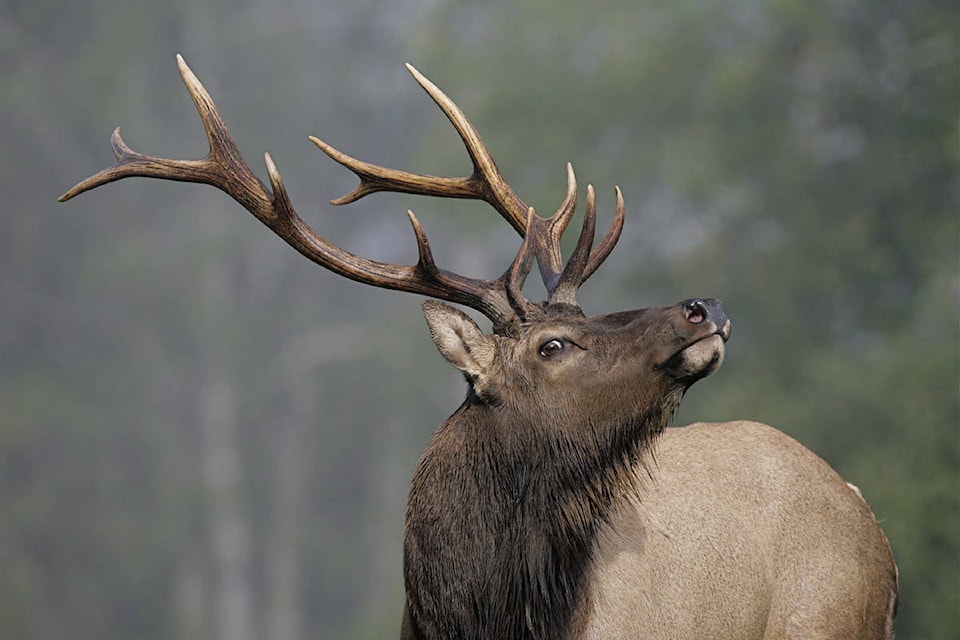Submitted
Glynn Flynn, president of the East Kootenay Wildlife Association
The new government report titled 2017-18 Rocky Mountain Trench Elk Inventory is not a surprise to the East Kootenay Wildlife Association (EKWA).
The report states: “The current 2017/18 population estimate is the lowest yet recorded and represents a 53 per cent decline since the 2007/08 inventory.”
The report also shows very clearly that the most dramatic elk population crashes in the East Kootenay since the 1990s were orchestrated by the government to reduce competition with domestic cattle in order to compensate for poor productivity on the land.
“Much of the decline was due to increased cow harvest rates from 2010-2012 to reduce overgrazing on crown lands and conflicts on agricultural land.”
Look back: Elk survey shows rapid decline in species
The government has been proactive when decreasing elk populations in the East Kootenay region.
The EKWA now demands government get proactive by understanding our local elk herd dynamics and increasing populations so we reach the objectives stated in the region’s elk management plan.
Elk populations are being reduced and ranchers grazing authorizations are being cut back because the land can’t sustain both. Everyone is losing under the current regime.
The August 23 government news release accompanying this new elk study states the low calf recruitment may be one of the contributing factors yet none of the proposed management actions seem to drill down on the calf recruitment concern or understanding elk population dynamics in general.
The EKWA knows most of the other management actions outlined by the government are actions that have been planned for some time now and they are not all new wildlife management actions developed to address what the recent elk population data is showing us.
Look back: Province to tackle declining elk populations in East Kootenay
EKWA urges the government to adopt a proper adaptive management framework for wildlife management so that there is a logical link between what data is saying and the actual management actions being implemented.
The government news release also states it has reduced antlerless cow elk limited entry hunting tags to one per zone when in fact the government is actually maintaining a general open season for cows and calves to protect hay fields and provide private land hunting seasons for select private land owners in the region.
Given the crash in the elk population, EKWA and other organizations have demanded cancellation of this cow and calf season prior to September 10 but EKWA’s request has yet to be acknowledged by government.
EKWA urges hunters and non-hunters to write to Hon. Forests, Lands, Natural Resource Operations and Rural Development Minister Doug Donaldson and demand the closure of this cow and calf elk general open season before September 10.
The decline of elk in the East Kootenay is a long-term problem and it didn’t just happen in the past two years.
Look back: Hunting licence revenue could save elk: Shypitka
It isn’t just elk that have declined. In the East Kootenay, mule deer, bighorn sheep and moose have all been on downward trajectories for decades.
Crashing wildlife populations in the East Kootenay and across the province go back more than 30 years.
Wildlife inventories are done too infrequently yet they are the foundation of wildlife management especially for species that have lawful hunting seasons.
Some species that are in decline are not even being counted on a regular and complete basis (mule deer, moose and sheep).
The government continues to estimate how many animals are harvested by licensed hunters rather than make reporting mandatory and EKWA feels the province has yet to fully address the needs of First Nations hunters and reconcile any mis-trust so that we can all cooperate on reporting the total elk harvest each year.
None of these problems will be fixed until we have a properly funded wildlife management agency in B.C.
B.C. is one of the largest and most biologically rich jurisdictions in North America yet our wildlife management receives some of the lowest funding of anywhere on the continent.
Lack of consistent long-term investment in wildlife management is showing up as declining wildlife populations all over the province.
Until we see money and wildlife plans that address issues such as highway mortality, habitat fragmentation, resource exploitation, lack of productivity on the landscape, invasive and noxious weeds and predation, we expect that the province’s ungulate populations will continue to crash and potentially disappear like the Mountain Caribou.
EKWA is urging hunters and non-hunters to continue to advocate to government that they expect better wildlife management and they expect to see these downward trends in wildlife and biodiversity to be turned around sooner than later.
EKWA urges the public to express their concerns directly to their elected officials and to the Premier and his Ministers.
The goal of every voter should be to make wildlife and biodiversity conservation the number one provincial issue in the next election.
It’s time that elected officials in B.C. get elected based on their proven track record in conservation.
It’s time to live up to using the title “Super Natural British Columbia”.
